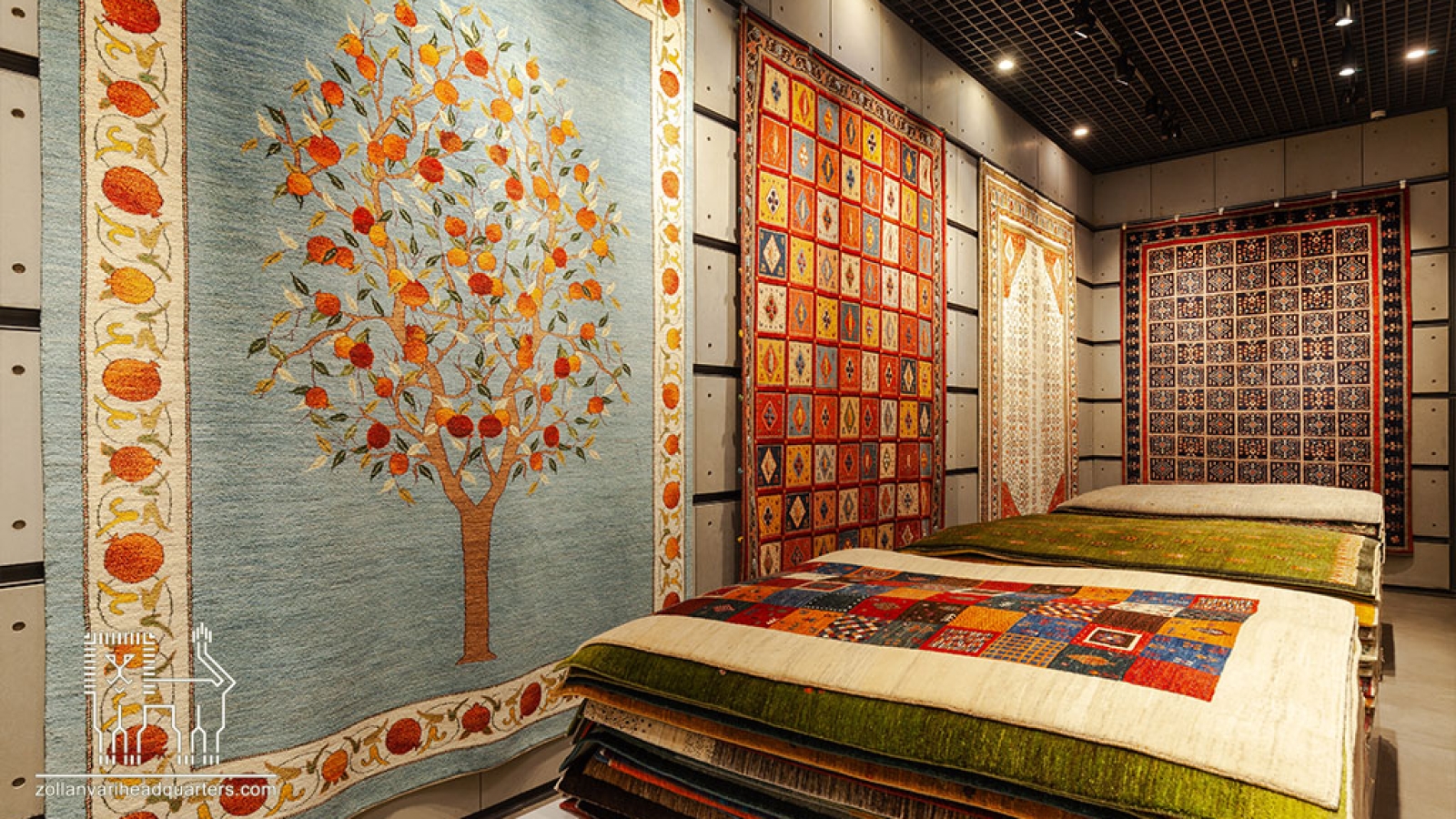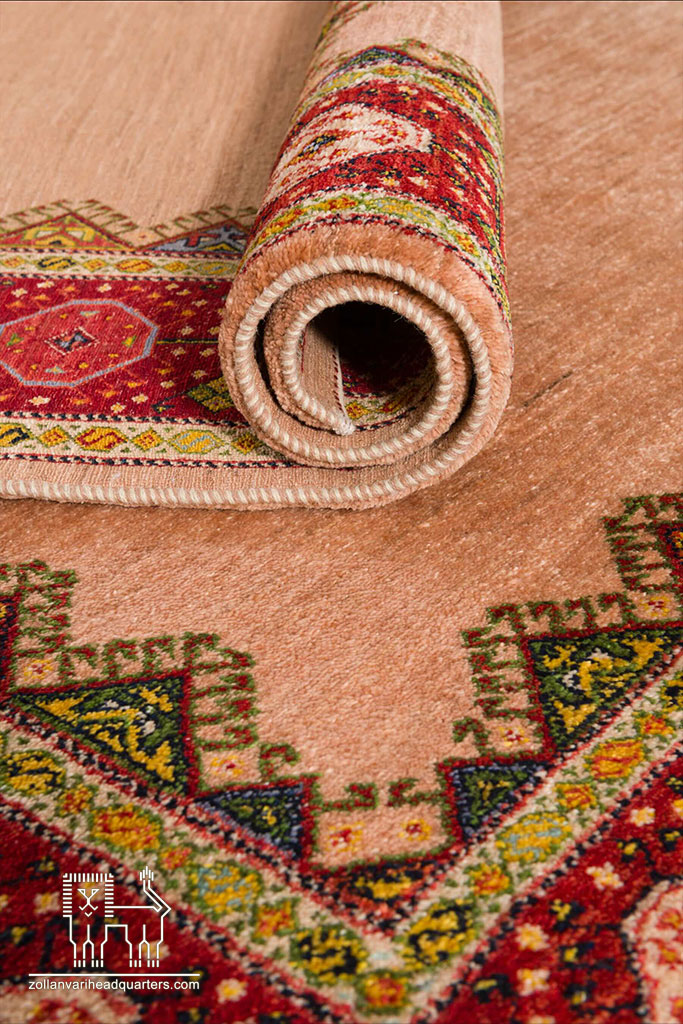The Selvage in Handwoven Carpets: Why and How It Contributes to the Durability of the Carpet
When we look at a fine handwoven carpet, we are usually drawn to its patterns, colors, and composition. However, what often remains hidden from view are the parts that hold this beauty together, such as the selvage. The selvage is the narrow strip along the edges of the carpet, which may appear simple but plays a vital role in the durability, beauty, and cohesion of the rug. At the handwoven carpet collection of Zollanvari, with over three generations of experience, we know well that the quality of the selvage is equal to the carpet’s lifespan.
What is the Selvage and Why is it Essential for Carpet Durability?
Before diving into the technical and structural aspects, a simple understanding of the selvage can change our perspective. The selvage is a thread woven or twisted along the carpet’s border, and its role is to protect the edges from wear and fraying. This part is what maintains the cohesion of the warp and weft at the edges of the carpet.
Main functions of the selvage:
- Securing the warp and weft at the edges: Without the selvage, the carpet could unravel from both sides.
- Preventing premature wear: The edges of the carpet experience the most foot traffic and contact with surfaces, making them susceptible to damage.
- Increasing the carpet’s lifespan: A carpet with a properly executed selvage lasts much longer.
- A neat and professional appearance: The selvage gives the carpet a clean and framed look.
Types of Selvages and Technical Differences
Professional weavers, like the masters at Zollanvari, pay special attention to the choice of selvage type when weaving a carpet. This choice depends not only on aesthetic preferences but also on the type of carpet, its intended use, and even the geographical region of production.
The most common types of selvages:
- Connected Selvage: Woven simultaneously with the carpet. Strong, cohesive, and beautiful.
- Separate Selvage: Sewn on after the carpet weaving is finished; offers more control over design and easy replacement.
- Crossed Selvage: Created using two different thread colors in a crisscross or alternating pattern; visually appealing.
- Woven Selvage (Multi-strand): More common in tribal carpets; resistant to wear and represents the local identity.
How to Identify Quality Selvage?
Identifying the quality of the selvage is easier than it might seem, as long as you know what to look for. At Zollanvari, we always recommend that you examine the selvage both visually and by touch.
Features of high-quality selvage:
- Uniformity and symmetry: The selvage should not be too thick or thin and should remain consistent throughout the length of the carpet.
- Strong adhesion to the carpet body: The selvage must be firmly attached to the carpet, not loose or detached.
- Proper yarn quality: The yarn used should match and coordinate with the carpet’s warp and weft (wool, cotton, or silk).
- Accurate stitching or weaving: No extra or incomplete threads should be visible.
- Flexibility: The selvage should be soft yet durable, not stiff or brittle.
Selvage: The Artistic Frame and Cultural Symbol
The selvage is not only a technical feature. In many traditional Iranian carpets, especially those woven by nomadic tribes, the selvage represents the visual identity and even the regional characteristics of the carpet. The contrasting colors, unique weaving techniques, or even the number of twists can symbolize a particular culture or style.
The selvage as a cultural and aesthetic element:
- Emphasis on the design boundary: Defines the boundary of the main pattern and the overall frame of the piece.
- Reflection of local traditions: In some regions, specific colors and techniques are used for the selvage.
- Artistic effect: Like the frame of a painting, the selvage contributes to the better understanding and cohesion of the design.
Caring for the Selvage and Proper Restoration
Even if you have the best type of selvage, without proper care, its durability cannot be guaranteed. Caring for the selvage means protecting the entire carpet.
Important tips for maintaining the selvage:
- Avoid dragging the carpet on hard surfaces.
- Prevent prolonged exposure to moisture.
- Regularly inspect the carpet’s edges.
- Restore quickly if you notice any wear or fraying.
- Use professional restoration services, especially those offered by collections like Zollanvari.
Conclusion
The selvage, though seemingly simple, is one of the most important elements of Iranian handwoven carpets. This feature not only protects the structure of the carpet but also contributes to its beauty, authenticity, and cultural value. Choosing the right type of selvage, recognizing its quality, and maintaining it properly are essential steps in both purchasing and caring for a valuable carpet.
At “Zollanvari,” we proudly guarantee that every carpet that leaves our hands is not only beautiful but durable and authentic. The selvage, like a preserving line, encapsulates our history, art, and commitment to quality.


